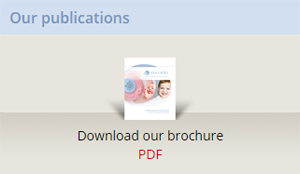The separation of spermatozoa from seminal plasma is needed for a variety of purposes, such as diagnostic tests of function and therapeutic recovery for insemination and assisted reproductive technologies. Density-gradient centrifugation and swim-up are the preferable methods for sperm preparation.
Density-gradient centrifugation
During normal conception, spermatozoa are separated from the seminal plasma and acquire specific characteristics when passing through the uterine cervix. In the laboratory, a special method allows us to mimic this stage.
The method uses centrifugation of seminal plasma over density-gradients consisting of colloidal silica coated with silane, which separates cells by their density.
Seminal plasma, white blood cells, debris, as well as bacteria and fungus are retained in the colloidal intermediate layers along with immotile spermatozoa. Motile spermatozoa swim actively through the gradient material to form a soft pellet at the bottom of the tube. After discarding the supernatants, the pellet is washed to remove the colloid. The procedure lasts about 60 minutes and is used for diagnostic purposes or before intrauterine insemination or IVF/ICSI.
The sperm concentration and motility are assessed before and after preparation. As a rule, the number decreases, but the motility and morphology are improved by this technique. The results of this test determine the IVF treatment (insemination, IVF, ICSI).
In very special cases, spermatozoa do not withstand this treatment, which is extremely selective. Then other methods are used, such as the swim-up method. This method is less selective and secure and, therefore, should be applied when there is no other option.
Swim-up
The sperm sample is diluted with culture medium and centrifuged. The supernatant is discarded, the pellet with the spermatozoa and other cells are resuspended to a small volume of culture medium, supplemented with about 1 ml of additional medium and placed in an incubator. The spermatozoa "swim" within the supernatant. Only motile and rapid motile spermatozoa are contained in the uppermost medium, which is carefully removed. The method is currently rarely used and it is not recommended if the motility is low and the sample contains many leukocytes.






























